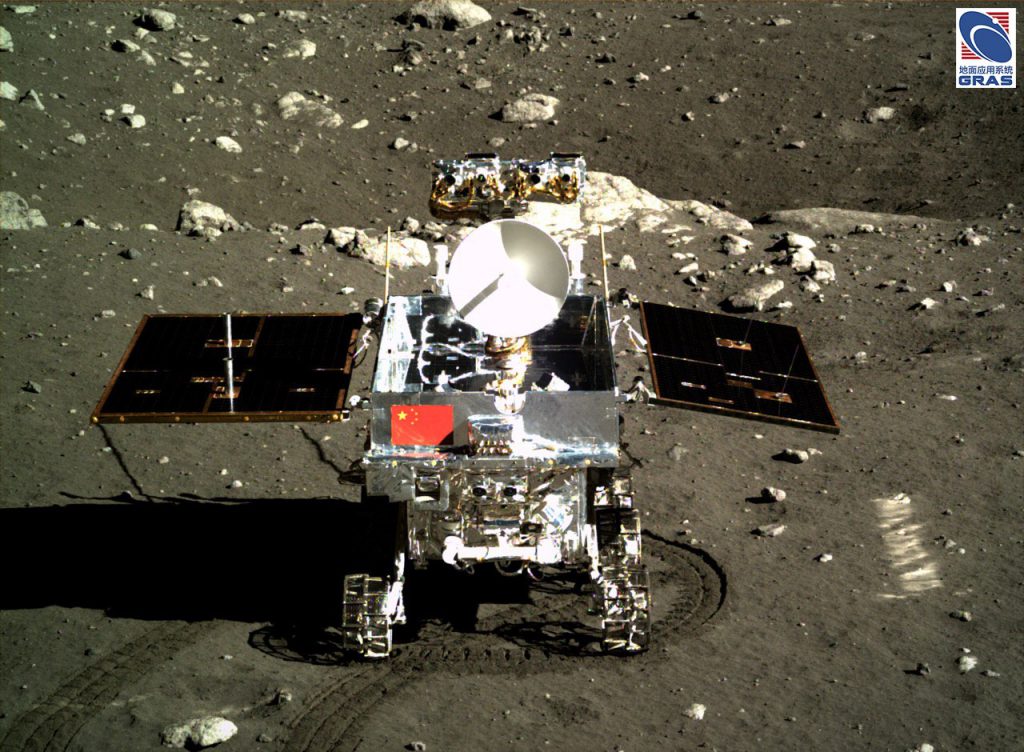China has initiated the fourth phase of its lunar exploration program, to establish a constellation of satellites around the moon that will offer communication and navigation services for future lunar expeditions.
Pakistan’s ‘Harba’ Missile – How Is Indian Navy Preparing To Defend Itself From Moskva-Like Incidents?
Wu Yanhua, deputy director of the China National Space Administration (CNSA), told the media on April 24 that China will lead the way in establishing a small, lunar relay communication and navigation system.
The small constellation’s initial launch could take place in 2023 or 2024. During the announcement, Chinese scientists invited nations from all around the world to join the project.
Though no additional information was given, China’s lunar exploration roadmap and mission concepts offer insight into its ambitions. The Chang’e-6, Chang’e-7, and Chang’e-8 lunar missions will be launched in sequence, and the country will strive to make crucial technological advances and create an international lunar research base.
Moreover, the communications relay and navigation services would be used to support the Chang’e-6 sample return mission and Chang’e-7, which contains an orbiter, lander, rover, and a small hopping spacecraft for examining shadowed craters for water-ice.

Chang’e-7 was previously supposed to debut around the same time as and possibly ahead of Chang’e-6.
Chang’e-8, which will be used to evaluate in-situ resource utilization and 3D printing technologies, will follow as a stepping stone toward the International Lunar Research Station (ILRS) in collaboration with Russia.
Purpose Behind the Mission
The fourth phase’s main purpose is to conduct scientific exploration on the moon’s south pole and to establish a fundamental type of lunar scientific research facility. The fourth phase will be completed in three stages, with all three probes launched by 2030.
Between 2030 and 2035, the ILRS project would see the development of a permanent robotic base on the moon. Once operational, the base will be able to accommodate a long-term human presence.
Both Chang’e-6 and Chang’e-7 are scheduled to aim for landings near the lunar south pole. China has a relay satellite in a halo orbit around Earth-Moon Lagrange point second to communicate with the Chang’e-4 lander and Yutu-2 rover on the lunar far side.
A data relay satellite receives command messages from a ground station and sends them to a user satellite through a radio frequency cross-link (inter-satellite link).
However, a new orbit would be required to improve communications and allow for the transmission of bigger amounts of data between Earth and the lunar south pole.
How Will Relay Satellite Assist The Project?
China’s lunar communications and navigation constellation will most likely be built in stages, giving increased capabilities as the country’s lunar goals evolve.
One possibility for a relay satellite to assist Chang’e-7 is that it will operate in an inclined highly elliptical frozen orbit. It will have a perilune of 300 kilometers, an apolune of 8,600 kilometers, and an inclination of 54.8 degrees. This will enable communication links for more than 8 hours of the orbit’s roughly 12-hour duration.
However, other options are also being investigated. Kristin Burke of the China Aerospace Studies Institute (CASI) told the Spacenews that Chang’e-5 extended mission activities could be utilized to try out different orbits for a constellation.
On December 17, 2020, the Chang’e-5 probe returned to Earth with 1,731 grams of lunar samples, mostly rocks, and soil from the Moon’s surface. Chinese media recently reported that samples retrieved by China’s Chang’e-5 mission have aided researchers in better understanding the impacts of latitude on space weathering (SW) on the Moon.
The probe is believed to be currently in the moon’s distant retrograde orbit (DRO).
“China’s Chang’e-5 orbiter is supporting a few different follow-on exploration missions, to include future solar science probes and now possibly future spacecraft at lunar Distant Retrograde Orbit,” Burke said.
“Chinese academics’ English and Mandarin language articles indicate that China is considering a couple of different orbital regime combinations for communication and navigation architecture. Some of those include satellites in DRO,” says Burke.
Meanwhile, Wu also launched an international cooperation center for satellite data and applications under the CNSA, as well as a data and application facility for the BRICS countries’ remote sensing satellite constellation.
China isn’t the only space actor interested in lunar communications. NASA is in the early stages of developing LunaNet, a concept that would deploy a network of satellites around the moon to support the Artemis program and other lunar missions.
The European Space Agency (ESA) has also granted study contracts for lunar communications and navigation systems as part of its Moonlight initiative.
- Contact the author at ashishmichel@gmail.com
- Follow EurAsian Times on Google News